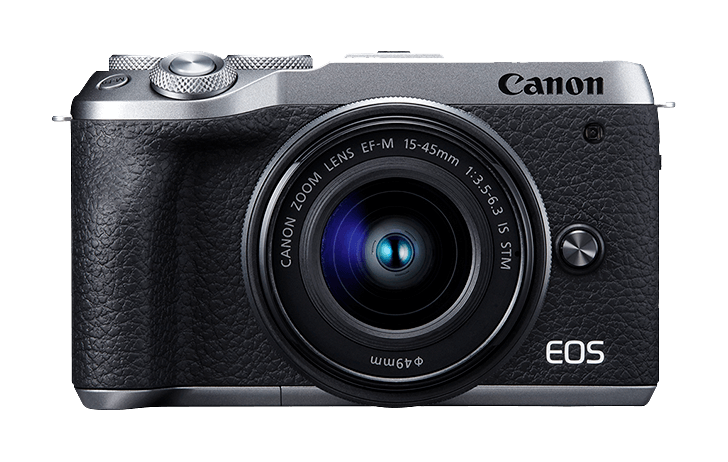It's easy to jump on a company or a product for features that it doesn't have, and on the internet, the negative a lot of the time has a louder voice than the positives.
Since the Canon EOS RP which doesn't have 24p in Full HD record, but does in 4K without DPAF, PowerShot G7 X Mark III and PowerShot G5 X Mark II launched without 4K and/or 1080 recording in 24p, a lot of Canon users have been very vocal in their disapproval of the decisions along with asking why on earth the feature doesn't appear in their new cameras.
Now that the Canon EOS 90D and Canon EOS M6 Mark II have launched without 4K in 24p, it seems to be a new trend for Canon to omit this recording capability.
The question is why?
I posted a silly poll on Twitter last night asking why you think Canon has started to omit the ability and joke's aside, Steve Waldron gave us some food for thought on the question.
Is it because manufacturers have to pay licensing fees for different encode/decode in MP4 AVC?
From Wikipedia:
In countries where patents on software algorithms are upheld, vendors and commercial users of products that use H.264/AVC are expected to pay patent licensing royalties for the patented technology that their products use. This applies to the Baseline Profile as well.
This could very well be the reason, as Canon wants to protect their margins on lower-priced products. Keep in mind that the more expensive Canon EOS R does include 4K recording in 24p.
Now you may say, “well other manufacturers include it in their lower-priced products”, and you'd be correct. The difference I see is Canon continues to slowly increase market share in a shrinking market and have remained quite profitable, even though outside global economic events have eaten into profits. Canon continues to mention protecting margins in financial presentations.
When you're developing and designing a product and you have certain price points you'd like to hit, there are always trade-offs and you have to make decisions whether or not omitting a feature will affect the sales of your product, and it looks like Canon doesn't think removing 4K 24P in their “consumer” products will have a negative impact on the sales and profitability of the cameras.
I imagine that 4K 24p could be added via firmware on the technical side of things, but I'm not sure if licensing fees would be a roadblock with a firmware update. I have also have no idea how much these licensing fees are.
Now, none of this may be the case, but I think it's just a good guess.
If any other media outlets reading this have a chance to interview Canon engineers or marketing people, please ask the question.
Correction: The Canon EOS RP does record in 4K at 24p, but without DPAF, however, there is no Full HD 24p on the EOS RP. We have updated the story accordingly.


The other video issue, the removal of MOV and ALL-I encoding, might really be about transistor budget; perhaps the hardware just isn't there in DIGIC 8. Though it is a mystery to me why Canon even bothered to make a distinction between MOV and MP4; after all they're just container formats and the actual data is MPEG-4 anyway…
Otherwise very interesting answer and may be right in that area.
I don't think it has anything to do with hardware, the DIGIC 8 powered EOS R does it all.
True. But I'm also not at all sure that a DIGICn is a DIGICn is a DIGICn. That is, the branding is more about marketing, and different instances of the same generation of DIGIC may have different hardware details, just like different Intel processor models have different features even though they share the microarchitecture generation.
Note: The above is SARCASM. That's what the <sarcasm> tag means. Clear 'nuf?
Again, I really don't buy segmentation here because there are no other upstream products to push people to at the moment that don't have their own sacrifices. Maybe there is another product coming that ticks all those boxes for the few interested and that is what people will be pushed to.
i have the 1DX2 and dos 24fps in 2 and 4K
Errr.... tell that to Hollywood, which I believe is still shooting 24 fps.
/s :rolleyes:
There's a long list of companies that "care about their customers" right into bankruptcy. Would you rather Canon give you everything you want at the price you want for the next few years...and then go out of business, or produce imperfect-but-competitive cameras (and exceptional lenses) for the next 50-75 years?
Consumers think short view. Successful businesses think long view. There are often instances where one comes at the expense of the other. Finding the right balance is what leads to succeeding in a competitive marketplace, which Canon is doing.
It's also helpful to remember that if a company doesn't make products demanded by the market, they won't sell any and will go out of business. Canon has no interest in that scenario, and releasing the occasional head-scratcher or flop isn't proof otherwise.
Yeah? Like who?
24p wasn't set as the standard because how wonderful it was.... simply because it was the slowest that still provided realistic movement on screen. In other words... the cheapest way to produce a film people would like to watch without walking out of the theater.
Those who think 24p is for cinematic look need to realize "The Hobbit" series was shot in 48p. Additionally, the next two "Avatar" films are said to be filmed in higher frame rates as well.